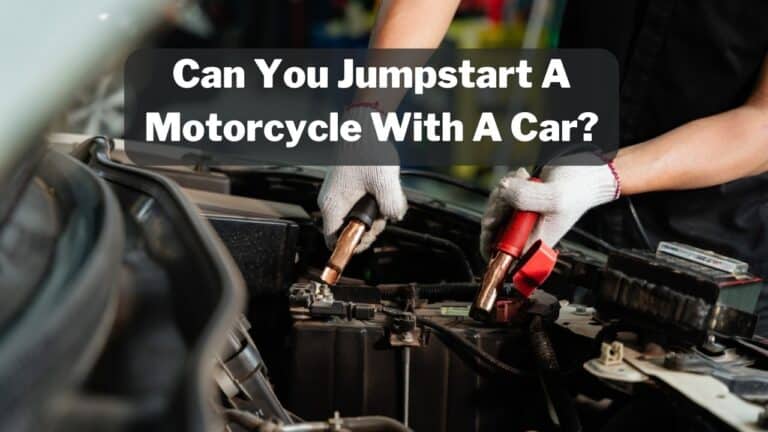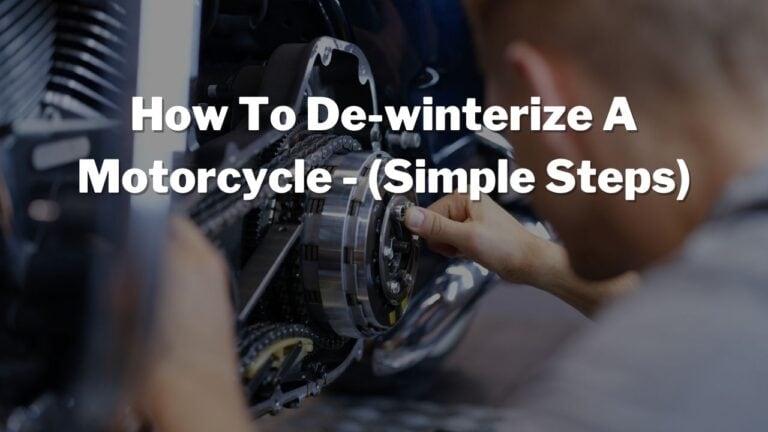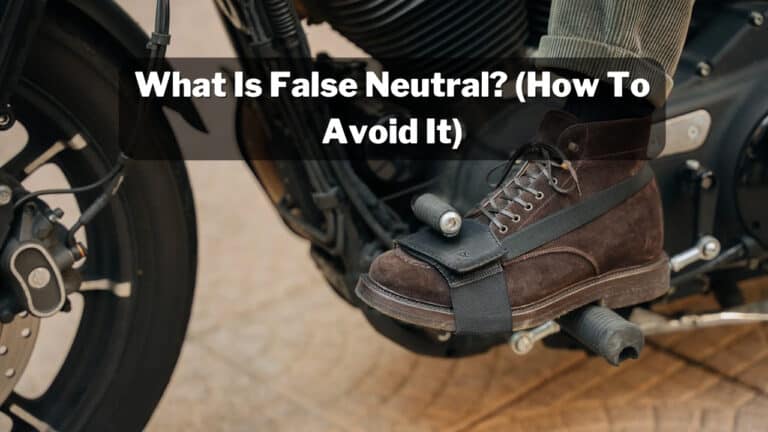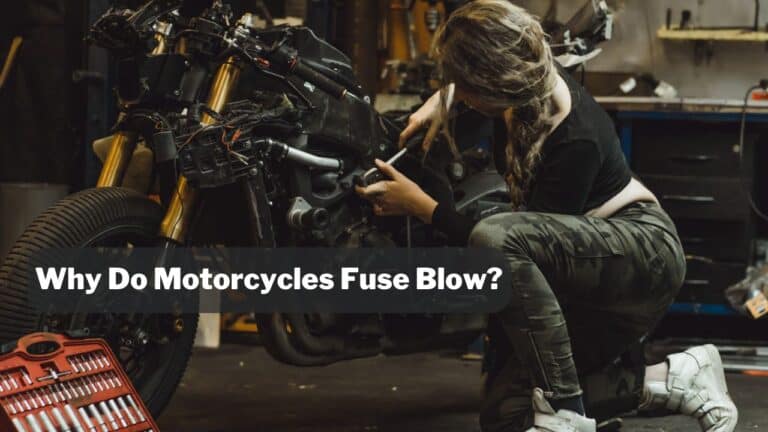Why Is My Motorcycle Bogging Down At Full Throttle? – (Solved!)
There’s nothing quite as exhilarating as twisting the throttle bar on your motorcycle and feeling the wind rush past you.
But what happens when your bike bogs down, hesitates, sputters, or loses power when you accelerate?
It’s a frustrating experience for a motorcycle rider. Unfortunately, many riders face this problem on pre-owned motorcycles.
In this guide, we’ll look at the possible reasons behind this issue and find solutions to get your motorcycle running smoothly again.
Table of Contents
Why A Motorcycle Bogs Down When Accelerating?
A motorcycle bogs down mainly due to incomplete combustion of fuel and lean air-fuel mixture supply. Cleaning the spark plug, adjusting float height, and unclogging the fuel line fixes the problem.
The following are the possible reasons for the incomplete combustion of fuel and lean air-fuel mixture supply:
- Incomplete Combustion: The air-fuel mixture may not burn entirely due to a bad spark plug or an insufficient oxygen supply (too rich air-fuel mixture) because of a clogged air filter.
- Lean Air-Fuel Supply: The primary reasons for a lean air-fuel mixture supply are a dirty carburetor pilot jet or fuel injector and a clogged fuel line.
How To Avoid Motorcycle Bogging On Acceleration
The problem mainly occurs on pre-owned or non-maintained motorcycles. To eliminate engine bogging on carbureted bikes, you can try the following methods:
1. Clean The Spark Plug
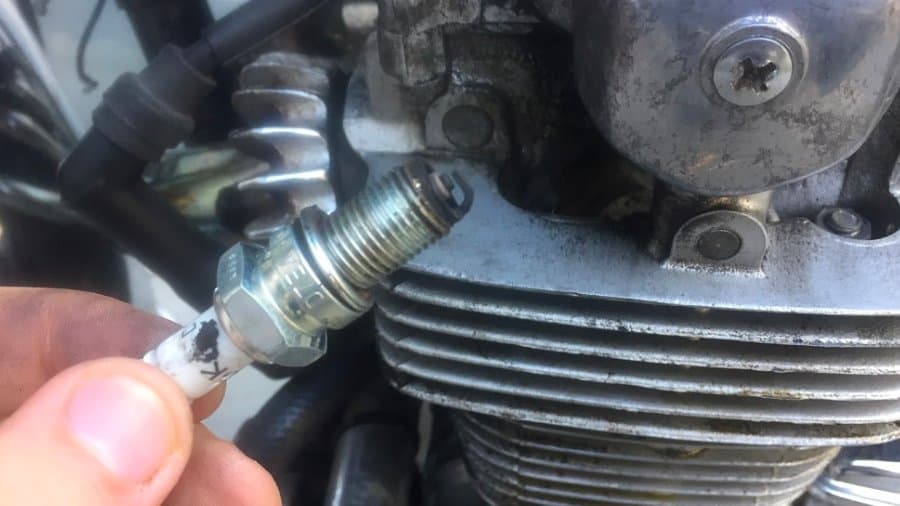
The function of a spark plug is to ignite the air-fuel mixture. The strong spark ignites all hydrocarbons, while the weak spark leads to incomplete combustion.
A foul, dirty, and worn-out spark plug causes a weak spark, resulting in poor engine performance at full throttle.
So, if you haven’t changed your spark plug yet, I advise you to inspect it. If the spark plug is dirty, take a few drops of gasoline in a cotton cloth and clean the tip thoroughly.
Typically, motorcycle spark plugs last 15,000 to 20,000 miles. You should replace it if you see any sign of wear.
2. Change Air Filter
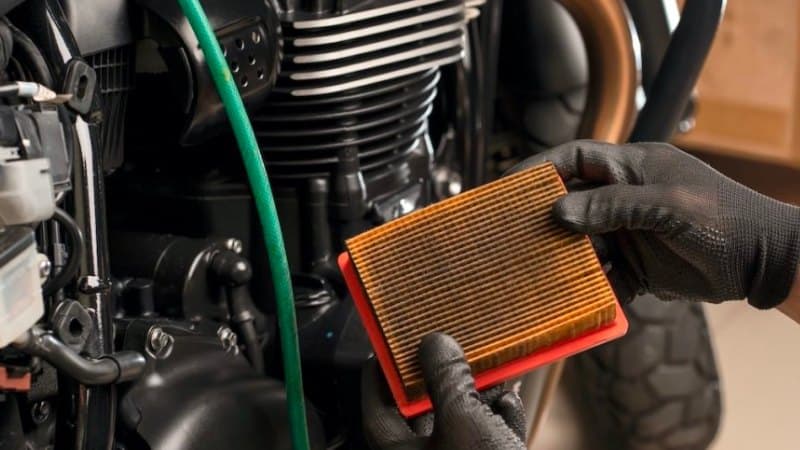
A clogged air filter is the primary reason for too rich air-fuel supply. Incomplete combustion occurs due to insufficient air supply, resulting in poor engine performance and power output.
If you haven’t changed your air filter in the last 10,000 to 12,000 miles of the ride, the filter pores are probably clogged with dust and debris, and it’s time to change your filter.
A new air filter improves the air intake on full throttle, and the motorcycle engine will generate more power.
3. Clean The Carburetor
Regular cleaning and maintenance are required for a smooth engine operation if you have an old motorcycle with a carburetor.
Over time, the carburetor pilot jet is plugged by dirt from the fuel or air. The plugged pilot jet reduces the fuel supply, resulting in a lean air-fuel mixture.
The lean air-fuel mixture causes your motorcycle engine to bog at half or full throttle. So, you should open the carburetor and clean it thoroughly with WD-40 cleaner spray and a microfiber cloth.
4. Adjust Float Height
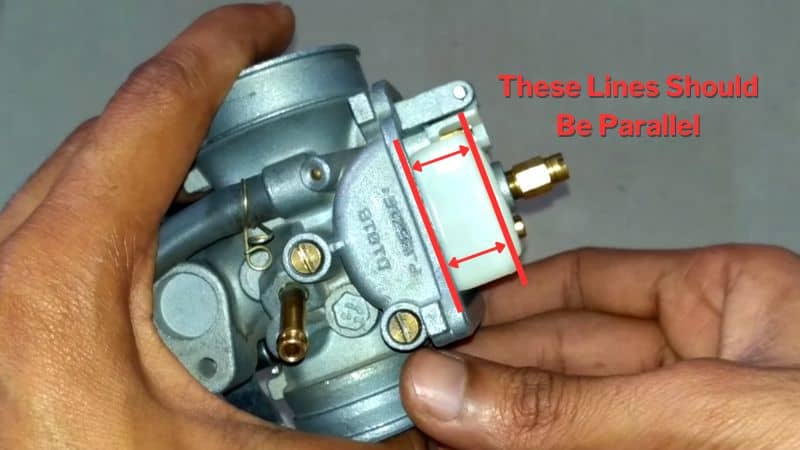
In the carburetor, a plastic float is attached to the float valve to control the fuel level in the bowl. The float height should be adjusted to maintain a sufficient fuel level in the bowl.
If the float height is high, the fuel will fill above the specified operation level, and your motorcycle will show symptoms of a rich air-fuel mixture supply.
If the float height is low, the fuel level drops below the operational level, and your motorcycle bogs down at high rpm.
So, you should adjust the float height at the optimum level (parallel to the carburetor edge) for smoother rides.
5. Clean Fuel Line

Your fuel tank is made of metal, and it rusts inside due to moisture and partially clogs the fuel line.
Fuel line clogging prevents the fuel supply to the carburetor or fuel injector, which causes engine bogging.
To fix this, you must clean your fuel line with pressurized air. Disconnect the fuel line from the tank and carburetor and intermittently supply pressurized air from one side. Repeat it until you can see no more gunge.
6. Install Aftermarket Exhaust
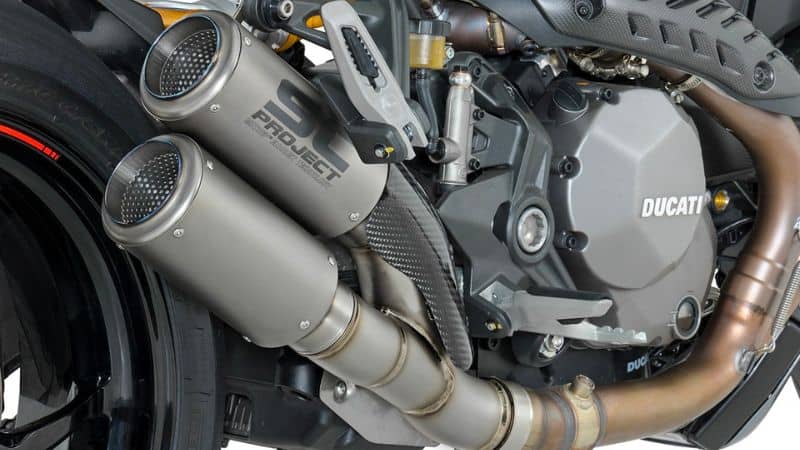
OEM exhausts have catalytic converters to neutralize harmful gases (COx, NOx, HC) produced in fuel combustion.
Over time, the pores of the catalytic converter are plugged, preventing exhaust gas flow. Due to this, a back pressure acts on the exhaust manifold, resulting in incomplete combustion.
Decating or installing an aftermarket exhaust (with free flow) increases the power output and makes the motorcycle louder.
However, it also increases emissions, which is illegal in many states. So, read the emission norms of your state or install a legal exhaust pipe.
These are six working methods to fix motorcycle bogging problems on carburated bikes.
Fuel-Injected Motorcycle Bogging Down Fixed
In modern bikes, the air-fuel ratio is electronically controlled. Various sensors send data to ECU, which controls the fuel supply to maintain a stoichiometric ratio for better performance and mileage.
If your fuel-injected bike is bogging down on acceleration, try the following methods to fix it:
- Clean your fuel injector: Dirt in gasoline or tank clogs the fuel injector nozzles, which causes bogging issues on acceleration. Clean the fuel injector with a WD-40 spray cleaner to fix the issue.
- Clean your O2 sensor: An O2 sensor is installed on the exhaust pipe to detect the presence of oxygen in exhaust gases. The sensor sends signals to the ECU that calculates and controls the air-fuel ratio. Over time, exhaust gases foul the O2 sensor, which disturbs the accuracy of the air-fuel ratio, and your motorcycle bogs on acceleration.
Conclusion
Following the above solutions, you can restore your bike’s power output and performance. Remember that if you’re unsure about diagnosing or repairing the issue, seeking professional help from a mechanic is always a wise choice.
